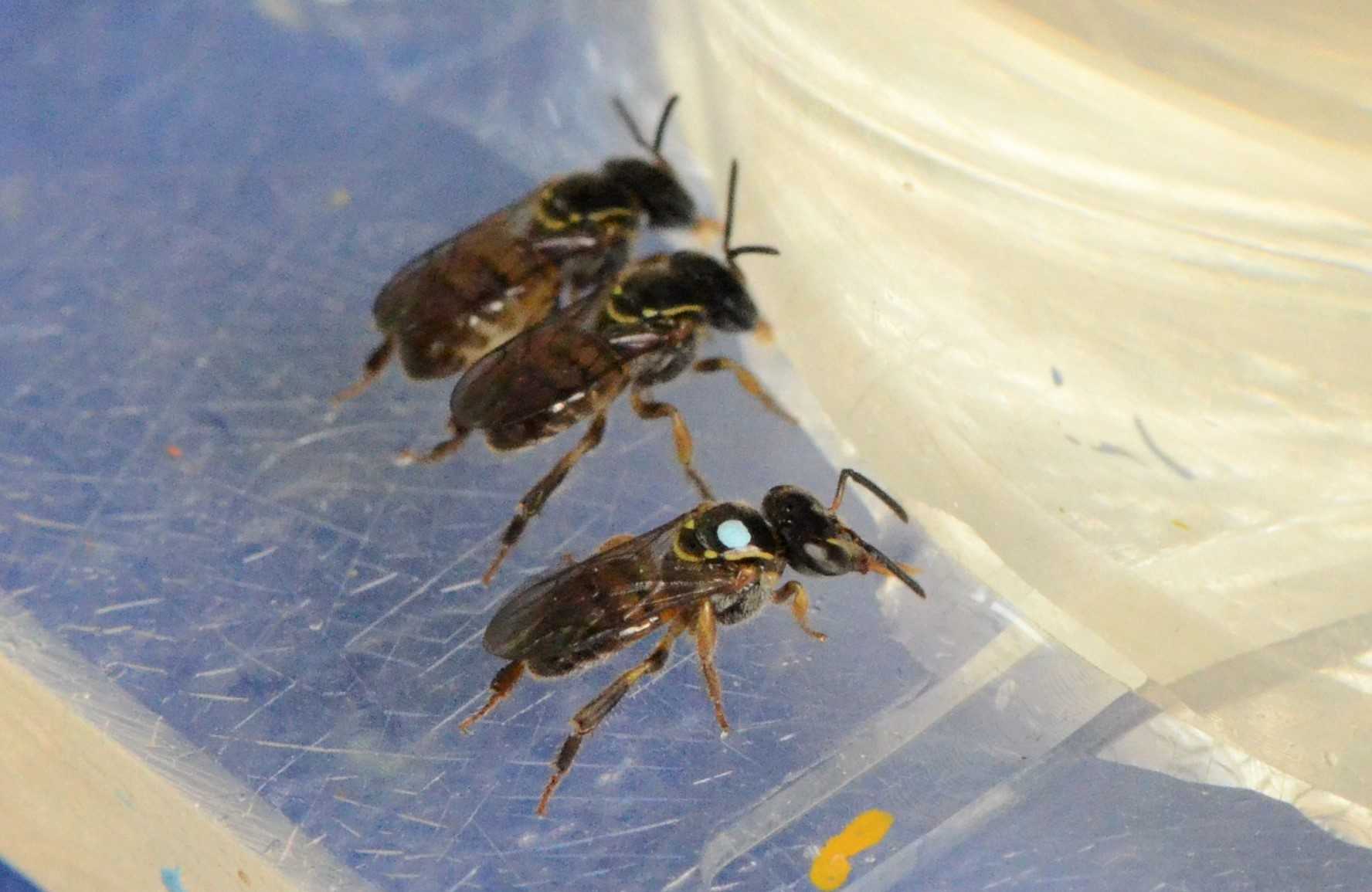MAINZ, Germany – The western honey bee (Apis mellifera) that has a sting for use in defense is common in Western Europe; stingless bees, on the other hand, are mainly at home in the tropics and subtropics. They are a very social group and live in colonies. They construct hives where they store honey for their colony.
While the western honey bee reacts to the presence of caffeine in nectar and pollen and becomes more active in terms of foraging the corresponding food source, it would seem that stingless bees find caffeine to be less appealing.
“We looked at stingless bees in Brazil but found there was no effect when we offered them caffeinated feeds,” said Dr. Christoph Grüter of Johannes Gutenberg University Mainz (JGU).
“In the context of our study, the behavior of the insects was not influenced by the presence of caffeine.” Some plants add caffeine or other secondary metabolites to their nectar with the aim of manipulating the activity of pollinators. The western or European honey bee and the bumblebee are indeed susceptible to this form of deception. They increase their foraging of the resource in question, thus benefiting the plant through enhanced pollination but, at the same time, the food materials the insects collect can be of poor quality, resulting in potential harm to themselves and their colony.
First investigation to consider the effect of caffeine
Caffeine is a compound present in various plant species, including coffee, tea, and citrus fruits. It is known to stimulate the central nervous system – in humans as well as in honey bees. When honey bees encounter caffeine, their motivation to increase their collecting behavior is reinforced. As a result, they take up more nectar, their learning capacity is improved, they tend to visit blooms that offer caffeine more frequently, and increasingly direct other bees to the food source in question.
Over the long term, however, this can have negative consequences for a colony. Certain plants seem to be using specific substances such as caffeine to attract more insects and thus increase the extent of their own pollination while investing minimal sources of energy in the nectar and pollen they produce.
Once a honey bee has come across a plant offering caffeine, she will – upon returning to the hive – direct her sisters to the existence of this food resource by means of the waggle dance despite the fact that this plant may contain far less sugar than resources provided by other plants. In other words, this very plant may be of poorer quality as far as the needs of the colony are concerned.
Dr. Christoph Grüter and his team have undertaken the first study designed to examine how stingless bees react to caffeine. Working in collaboration with researchers of Goethe University Frankfurt and the University of São Paulo, they selected Plebeia droryana as the test species, a small bee that is indigenous to southern Brazil and is about the size of a common ant.
There are more than 400 different species of stingless bee that have their habitats in Central and South America. P. droryana is one of the main pollinators of coffee. “Although coffee plants can form coffee beans without pollination, pollination will increase the yield,” explained Tianfei Peng, Ph.D. student in Grüter’s team and lead author of the study.
“As coffee bushes produce pollen and nectar, bees are readily attracted to them.” The stingless bees transport the pollen back to the hive in the pollen baskets on their hind legs while they store the nectar in their so-called communal stomach – just as honey bees do.
Stingless bees get their buzz from sugar rather than caffeine
The team of biologists first trained stingless bees to collect a sugar solution from a feed dispenser they had set up on a former coffee plantation near São Paulo. They then offered the insects both sugar solution with and without a caffeine additive, whereby the concentration of the stimulant was adjusted to the caffeine content naturally present in Brazilian coffee plants.
Some of the tiny, just 3-millimeter-sized insects were marked with a dye so that they could be recognized and their behavior monitored. The researchers then documented how often the bees returned to the food source, how rapidly they collected the solution, and whether they informed their sisters about it. Although stingless bees do not perform the waggle dance, they do use some other form of communication.
This is yet not fully understood, but may involve laying down trails of pheromones or sounds generated by thoracic vibrations.
“We did not see an effect attributable to caffeine in any of the results we obtained,” summarized Grüter. “The rate at which the bees visited the dispensers was the same, irrespective of whether caffeine was present or not.” Evolution may be one explanation of why stingless bees are not seduced by caffeine. It is possible that P. droryana has developed tolerance towards the effects of caffeine over time. After all, coffee has already been cultivated in Brazil for almost 300 years. Another possibility is that the physiological responses of stingless bees differ from those of other bee groups.
Although caffeine had no effect on the foraging behavior of the test bees, the researchers did record another interesting outcome: When solutions with higher concentrations of sugar were on offer, the bees more often chose to visit the higher concentration solutions, in other words, the better quality food sources.
The researchers’ next step, according to Grüter, is to investigate how stingless bees react in an environment in which there is no tradition of coffee growing, such as in Australia, for instance.


















